#Imperial Crown of Russia
Text

Imperial Crown of Russia or the Great Imperial Crown is one of the most outstanding examples of ‘regalia.’
Regalia is referred to as the emblems or insignia of royalty that survived through history.
It is a precious cultural heritage treasure — a well-documented and well-dated piece of jewellery.
Regalia jewellery pieces offer historians great insight into the gemstones used, their historical market values, and occurrences.
It also helps gemologists and jewellers to know how the gems were named and set on the piece of jewellery.
While royal crowns were usually made for individual rulers and later broken up, some of this royal regalia could be found in museums today.
Here are some interesting facts about one such royal artifact, the great Imperial Crown of Russia.
The Great Imperial Crown was made for Catherine the Great’s coronation, as the Russian Empress in 1762 AD, by Georg Friedrich Eckart and Jérémie Pauzié.
It is set with 4936 diamonds with a total weight of 2858 ct, 75 natural pearls, and a large 398.72 ct red spinel, historically known as “balas ruby,” which is among the largest ever reported in the literature, most probably from Badakhshan (today’s Tajikistan).
Imperial Crown of Russia was first worn by the Russian empress Catherine, followed by the subsequent seven emperors of her dynasty.
This royal regalia has remained a permanent fixture on the royal head.
This priceless artifact has been passed on to eight members of the Romanov family:
Catherine II, Peter III, Paul I, Alexander I, Nikolai I, Alexander II, Alexander III, and Nikolai II.
The Romanov dynasty survived till 1917, yet the crown publically appeared for the last time in 1906 at the opening ceremony of the first State Duma.
The crown was estimated to be worth $52 million in 1920.
The stones that the royal regalia comprises were sold off by the Bolsheviks and replaced in 1985.
Later in 1998, the crown was moved to the fund of Kremlin’s Diamond. Subsequently, it was declared to be priceless in a literal sense.
📷 : A modern replica version of the Imperial Crown was made in 2012 by Kristall-Smolensk, as part of the Jewellery project "Creation of Imperial Crown of Russia in Modern Interpretation" to celebrate the 400 years of the Romanov Dynasty and the 250 years of the Imperial Crown, as well as the 50th anniversary of the diamond industry in Russia.
Using white gold (original used silver) and 11,426 russian diamonds (original crown had 4,936 diamonds) from Alrosa with a total weight of 1180 ct, including 74 cultured pearls and a 384.71ct pear-shaped double rose cut purple tourmaline on top of the crown.
The spinel in the replica was replaced with a unique natural red tourmaline with a mass of about 400 karats.
#Imperial Crown of Russia#Great Imperial Crown#regalia#royalty#jewellery#gemstones#royal crowns#royal artifact#Catherine the Great#Georg Friedrich Eckart#Jérémie Pauzié#diamonds#pearls#red spinel#balas ruby#Catherine II#Peter III#Paul I#Alexander I#Nikolai I#Alexander II#Alexander III#Nikolai II#Romanov dynasty#Kristall-Smolensk#State Duma#Imperial Crown#diamond industry
6 notes
·
View notes
Text
Grand Duchesses at the Coronation of Nicholas II and Alexandra Feodorovna
Nicholas II and his consort Empress Alexandra, were crowned on Tuesday, 14 May (O.S., 26 May N.S.) 1896, in Dormition Cathedral in the Moscow Kremlin. The magnificence of the occasion was never again seen in Russia. The Grand Duchesses were in full regalia. Here are two great photographs of them.

Above:
Sitting: Grand Duchess Alexandra Iosifovna (who had been present at the coronation of Alexander III); sitting on the floor at her knees is Princess Olga of Wurttenberg; sitting next to Alexandra Iosifovna is Princess Louise Margaret, Duchess of Connaught
Back Row Standing from Let to Right: Grand Duchess Vera Konstantinovna, Grand Duchess Anastasia of Mecklenburg-Schwerin, Grand Duchess Maria Pavlovna (the elder), Grand Duchess Elena Vladimirovna, Grand Duchess Elizabeth Mavrikievna, and Princess Elena of Saxe-Altenburg

Above:
In the center of this group, is Grand Duchess Marie Alexandrovna, (daughter of Tzar Alexander II, wife of Queen Victoria's second son Alfred, Duke of Saxe Coburg and Gotha, who is standing behind her.)
On the right side of Grand Duchess Marie Alexandrovna, is her daughter Victoria Melita, Princess of Saxe-Coburg and Gotha. Sitting to the left of her mother is the Crowned Princess of Romania, Marie (same name as her mother; known by the family as Missy). Her husband the Crowned Prince of Romania, Ferdinand, is standing slightly to the side, behind Missy.
Next to Ferdinand of Romania is Ernest Louis, Grand Duke of Hesse and By Rhine, husband of Victoria Melita at the time and brother of the Empress being crowned, Alexandra Feodorovna. To the right of Victoria Melita is her brother, Prince Alfred of Saxe-Coburg and Gotha who died at age twenty-four.
#Grand Duchess Vera Konstantinovna#Grand Duchess Alexandra Iosifovna#Grand Duchess Anastasia Mikhaelovna#Grand Duchess Anastasia of Meklenburg-Schewrin#Grand Duchess Marie Alexandrovna#Grand Duchess Elizabeta Mavrikievna#Grand Duchess Elena Vladimirovna#Princess Victoria Melita#Marie#Crown Princess of Romania#Missy#Princess Elena of Saxe-Altenburg#Princess Louise Margaret Duchess of Connaught#Princess Olga of Wurttenberg#imperial russia#romanov dynasty#Nicholas and Alexandra#Nicholas II#Coronation
28 notes
·
View notes
Text

#it’s me I’m girls#the episode of the crown has me in PAIN#pain and suffering#if they showed Alexei reaching out for his father I think I would’ve thrown up#a thirteen year old boy reaching out for his father before dying a brutal death….#and don’t get me started on the diamonds. THE DIAMONDS.#i know too much#russian history#imperial russia#the romanovs#amanda speaks#the crown netflix#the crown
42 notes
·
View notes
Text
Fantasy Guide to Royal Guards

Royals have multiple layers of servants but there is no set of servants most important that their protection. Royalty are never without some kind of protection and palaces are usually guarded to the teeth. So how do we write royal security. This is for @jamie-ties-writing
Recruitment

Royal guards aren't just any person plucked from the street and put into a uniform. They are usually recruited from within the royal army, from within particular regiments across the army (a mixture of calvary, naval, artillery, infantry). The Royal Guard is usually made of of multiple regiments, not just a single one. These regiments would share and rotate duties. The British Royal family are currently guarded by the Coldstream Regiment, Welsh Guards, Grenadier Guards among others. Royal guards will be selected for their skill, sometimes their birth (they may be chosen if they rank higher socially) and of course, loyalty to the Crown. Royal guards were intended to be a show of force, strength, Majesty so they were usually impressive specimens meant to instill some power to their monarch.
Duties
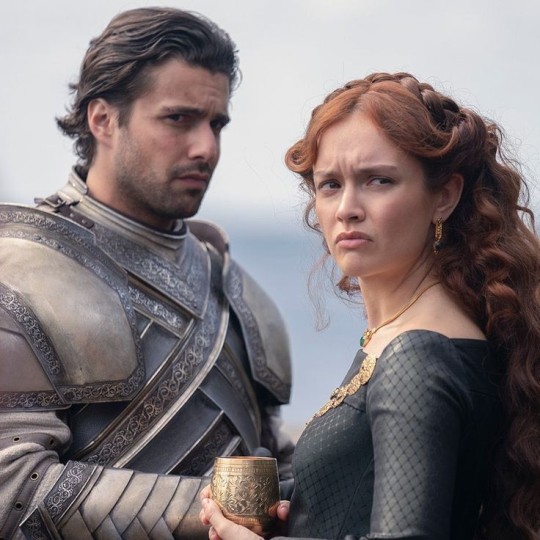
A royal guard's first order of business is the protection of the family. They may have sentry duty around the palace, guarding doors or patrolling palace grounds or corridors. A Royal Guard may be assigned to one member only but most likely they will rotate through the family as needed. Of course, a royal can request a guard to always be assigned to them if they want. They may escort their charge of the day to their engagements. If assigned a certain royal to protect, they would tail them throughout the day. A royal guard may even perform ceremonial duties such as the changing of the guard or riding in coronations or state funerals. A royal guard is expected to remain vigilant but never speak of what they see, they are meant to keep an ear out for threats but never repeat whatever is said, they are expected at all times to uphold a professional countenance and respect protocol. They will be expected to give their lives if needed, and be loyal to the last.
Rank
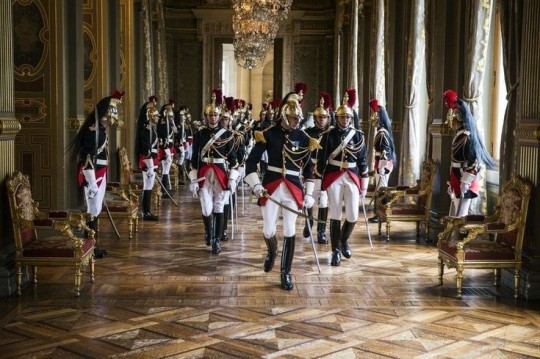
Royal guards are a military division and rank is a part of their lives. Their supreme commander would he the monarch first but there would be an appointed commander. Depending on how you want to write Royal Guards, each regiment would have it's own captain and leaders. Of course, not all regiments may adhere to the same ranks but this would be a basic outline for you to follow.
Colonel: Colonels actually have no duties, they are more an honourary figurehead. Many members of the royal family would have a regiment to be colonel of. This usually requires nothing more than a ceremonial role, the wearing of the uniform while inspecting the troops for example.
Captain: The Commander of the regiment. They would undertake managerial duties, issuing commands from the monarch, assigning duties, approving the induction of new guards into the Household Division. The Captain would decide who would guard which member of the royal family.
Lieutenant: The Second in command. They will assume command if the Captain is not available. They would take on a large portion of duties and aid the Captain.
Sergeant: The sergeant would be next in command.
Guardsman: The lowest rank. They will have the least experience but usually the most duties. They would be the ones patrolling and standing sentry.
Uniform

Of course, no royal guard is complete without their uniform. Royal guards would have to stand out, especially in ceremonial duties. This uniform would be distinctive, not only because it is a great honour for anybody to be named to the guard but also as mentioned above, to add a layer of might to those they protect.
Notable Royal Guard Units
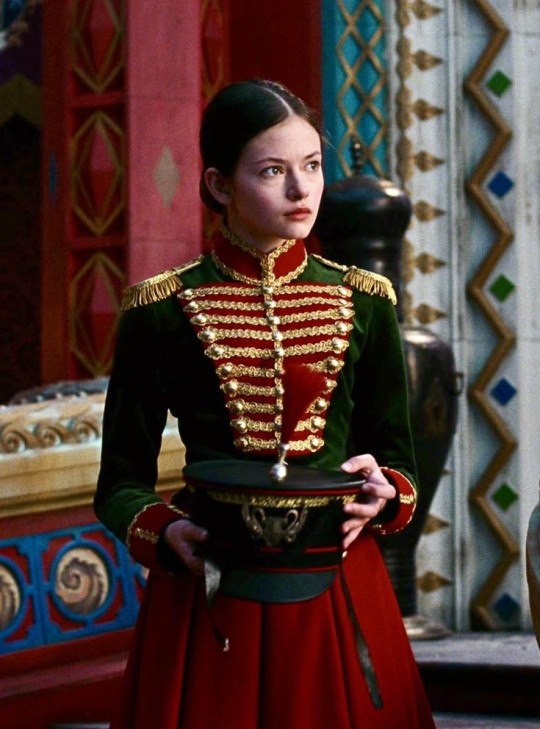
Dahomey Mino (the inspiration of Black Panther's Dora Milaje)
The Praetorian Guard
The Imperial Guard of Napoleon
The Imperial German Bodyguard
Varangian Guard
Swiss Guards
The Kheshig
The Janissary
The Imperial Guards of Tsarist Russia
The Cossack Guard
Guardia Real
Coldstream Guards
Irish Guards
Welsh Guards
Grenadier Guards
Medjay of Ancient Egypt
Al-Ḥars al-Malakī as-Suʿūdī
Compagnie des Carabiniers du Prince
Thahan Raksa Phra Ong
#Fantasy Guide to Royal guards#Royal guards#Royals#Royalty guide#Fantasy Guide#Writing reference#Writing resources#Writing advice#Writing resources writing reference#writing#writeblr#writing resources#writing reference#writing advice#writer#ask answered questions#spilled words#ask answered#writers
1K notes
·
View notes
Text

"When you heard that music, it felt like you’d known it your whole life. That music… it made you feel things you didn’t know you could. That man with the frailing hand made you feel like you could take on the whole doggone world."
"It had been twenty years since the people had risen up and been smashed back into the ground."
Twenty years ago, in the midst of a terrible famine, the people of the Kingdom of Mindolach rose up in defiance against the Crown, inspired by the words and the music of a man known only as the Green Bard. The rebellion was crushed, and the Bard disappeared.
Now, as crops begin to fail once more in Mindolach, young Orphia Dain discovers a mysterious instrument in a forest cave. Newly equipped with magical abilities she doesn't fully understand, she will journey across the breadth of the kingdom to seek out the sorcerers of Great Rock and, joined by a hillbilly wizard, a weary veteran, a mercenary swordswoman, and a highwayman, try to revive the spirit of revolution.
The Green Bard is a fantasy novel I have been working on for months now, set in a world based on the American South, Appalachia, and Ireland, with elements of Imperial Germany and Russia. The novel is intended to be the first instalment in a series titled A Blessing From Below. I will be publishing my first draft as it is written, and have made the first four chapters and prologue available now. I hope you will enjoy it, and welcome your feedback!
Read The Green Bard below:
(cover art drawn by @terrafey)
#a blessing from below#the green bard#fantasy#original story#original fiction#writers on tumblr#my writing
414 notes
·
View notes
Text
Alexandra Feodorovna’s Wedding Dress

“Her wedding dress was a magnificent creation; the outfit was so intricate that it took nearly an hour for Alexandra to dress. Her stockings were of lace, her shoes embroidered and decorated. Over these she wore layers of stiff petticoats. The wide, full skirt of silver brocade opened from the waist down to reveal a second underskirt of silver tissue, edged with fur. The décolletage was cut low, to reveal the neck and shoulders, and the gown had short sleeves trailing ermine-edged tippets. The tightly fitted, boned bodice was sewn with diamonds which sparkled with every move. The folds of the overskirt fell back to form a train, and a separate, sweeping court train of cloth-of-gold edged with ermine fell from her shoulders. Over this, Alexandra wore the imperial mantle of cloth-of-gold, lined and edged with ermine. These robes were so heavy that four pages had to help carry them.
Alexandra wore her hair swept back to emphasise her graceful neck and shoulders. Two long, twin side curls were attached to her own hair. Her long veil of tulle was held in place by a Russian Kokoshnik tiara, of diamonds set in platinum, and the Romanov nuptial crown of diamonds sewn on crimson velvet. Alexandra also wore a number of diamond brooches on the front of her gown, along with the jewelled chain of the Order of St. Andrew and strings of pearls around her neck. These jewels, as well as the tiara, had been wedding gifts from the late tsar, costing some 300,000 rubles ($150,000). She also wore the imperial riviére, a diamond necklace of 475 carats, and a pair of matching earrings. The earrings were so heavy, in fact, that they had to be supported by wires around the ears, which slowly cut into the flesh as the day wore on. Around her tiara, Alexandra wore a wreath of orange blossoms, brought from the Imperial Conservatory in Warsaw. Across the dress stretched the red ribbon of the Order of St. Catherine.”
[Greg King, The Last Empress: The Life and Times of Alexandra Feodorovna, Tsarina of Russia]
144 notes
·
View notes
Note
hi! i'm really loving icarus, you're a wonderful writer! but i just had a quick question. i love the flock graphics, and they're super helpful! would it be possible for you to maybe list the species of birds for the main 'characters' of the story as well? you don't have to post example photos or anything crazy, but i think just a list like that would be helpful too. sometimes i forget who has what kind of wings, and i think having a list so i can google image the bird would be great.
if that's not something you want to do or don't have time to do or something, no worries!! i really appreciate you taking the time to write icarus in the first place <3
Oof I might as well do a general guide! I never thought a maxiel wingfic would spawn so many specific wing allocations but here's the general list:
Paddock wings in Icarus:
Current grid:
Daniel Ricciardo - Scarlet Macaw (colourful, nimble flyers)
Max Verstappen - Peregrine Falcon (raw speed, inherited from his mother)
Sergio Perez -Crested Caracara (a type of mexican bird of prey)
Lewis Hamilton - Greater Bird of Paradise (beautiful wing plumes, lovely singer)
George Russell - Blue swallow (beautiful metallic-blue feathers, scream like madmen when they fly)
Carlos Sainz - Spanish Imperial Eagle (white epaulets, very regal)
Charles Leclerc - White Dove (need I say more? Perfect white wings, exploited because they're pretty but so intelligent in pathfinding)
Lando Norris - Lucifer Hummingbird (Small, colourful, likes to hover in place)
Oscar Piastri - Little Lorikeet (One of the smaller types of Australian parrot. Very cute)
Yuki Tsunoda - Japanese Long-tailed tit (Photos should be self explanatory. They fly like ballistic missiles)
Alexander Albon - Crested Fireback (National bird of Thailand. Beautiful dark blue and fiery plumage)
Logan - Blue Jay (Commonly found in Florida. Blue, like Logan's current posting, and his eyes)
Pierre Gasly - Osprey (A bird of prey often found near coasts along the European shoreline, and Pierre is from Normandy)
Esteban Ocon - Black Stork (Tall, gangly, also migrates through France)
Fernando Alonso - Kestrel (a type of small bird of prey, hunts by biding their time and waiting then divebombing)
Lance Stroll - Snowy Owl (Lance is cuddly ok and I didn't want to make him a Canadian goose because that's his dad)
Valtteri Bottas - Bullfinch (Look it up. The picture is self-explanatory. The manliest of men)
Zhou Guanyu - Chinese Red-Crowned Crane (A crowned crane for the champion of the universe, as translates his name)
Kevin Magnussen - Raven (Viking. quoth the raven.)
Nico Hulkenberg - Crow (he keeps coming back. As wily as many of their bird counterparts but has a bad rep for being a bad omen)
Retired drivers or drivers not currently on the grid:
Sebastian Vettel - Swiftlet (Extremely good fliers, reaching up to 160km/h and pulls insane G-forces)
Mick Schumacher - European robin (Very cute. Universally liked. Same wings as his father)
Nico Rosberg - Eurasian Sparrowhawk (a bird of prey that hunts by ambushing before a high-speed, agile chase)
Jenson Button - Northern Harrier (hunts in a high-speed flight close to the ground, exceptionally good listeners)
Mark Webber - Cassowary (look up a photo. Just look at it.)
Kimi Raikkonen - Giant Albatross (King of gives no shits, flies very long distances without a care)
David Coulthard - Bush-Stone Curlew (White trousers!)
Romain Grosjean - Red-tailed Hawk (I chose the bird of prey that could best mesh with the phoenix metaphor)
Antonio Giovannazi - White-spotted Starling (Very pretty plumage)
Daniil Kyvat - Great Bustard (I honestly don't remember why. Distributes in Russia)
Nyck De Vries - Common European Sparrow (Small. Commonly found. Unfortunately often hunted)
Nikita Mazepin - Flamingo (Need I say more)
Sir Jackie Stewart - (Clipped) Merlin Wings (Extremely fast Scottish bird of prey. In-fic, Jackie was one of the generation of drivers that clipped their wings, permanently robbing them of flight)
Team Principals and people in the paddock:
Toto Wolff - Black Swan (self-explanatory)
Christian Horner - Golden Eagle (A bit pompous. Matches his hair)
James Vowles - Magpie (Utterly clever, not from any particular prestige)
Fred Vasseur - Partridge (Affable. Cuddly.)
Guenther Steiner - Shoebill (self-explanatory, look up a photo)
Cyril Abiteboul - Eagle Owl (something about his face is very Eagle Owl)
Micheal Italiano - Kookaburra (laughs when they shouldn't)
Zak Brown - Chicken (self-explanatory. Literally and metaphorically)
Andreas (mclaren) - Common Quail (short lifespan)
Mattia Binotto - Pigeon (wants to be as pretty and loved as Charles. Is a public nuisance instead)
Otmar sznafnauer - Peacock (Struts around, can't really fly)
Resident Bastard:
Jos Verstappen - Cuckoo (Cuckoos are brood parasites, and lay their eggs in nests of birds of other species'. The cuckoo parent therefore does nothing while other birds raise their young)
#I've probably missed a couple minor characters so if anyone has any questions feel free to drop a reply and I'll answer#f1#f1 wingfic#f1 wing au#icarus#my post#writing#fanfic
33 notes
·
View notes
Text
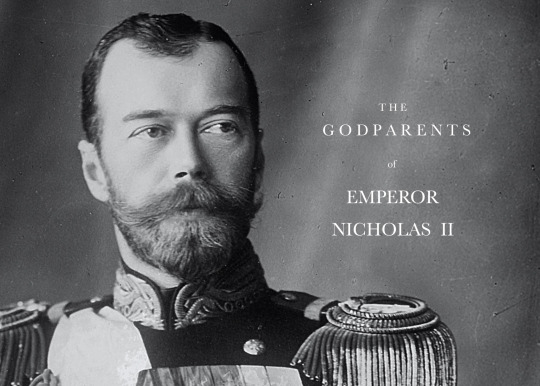


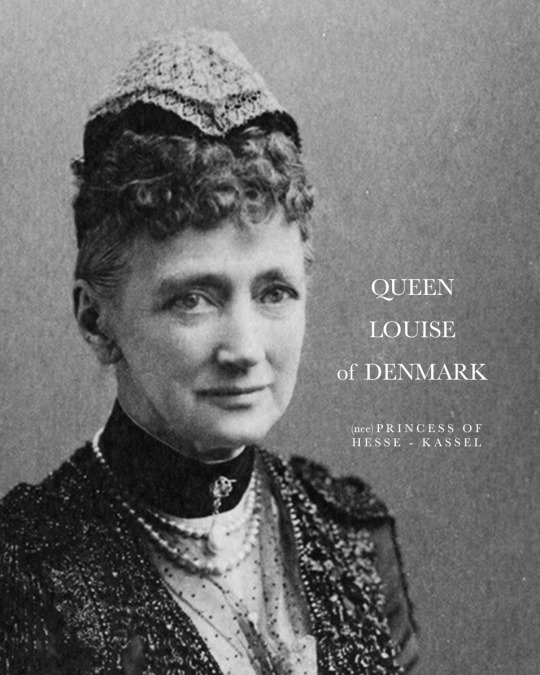

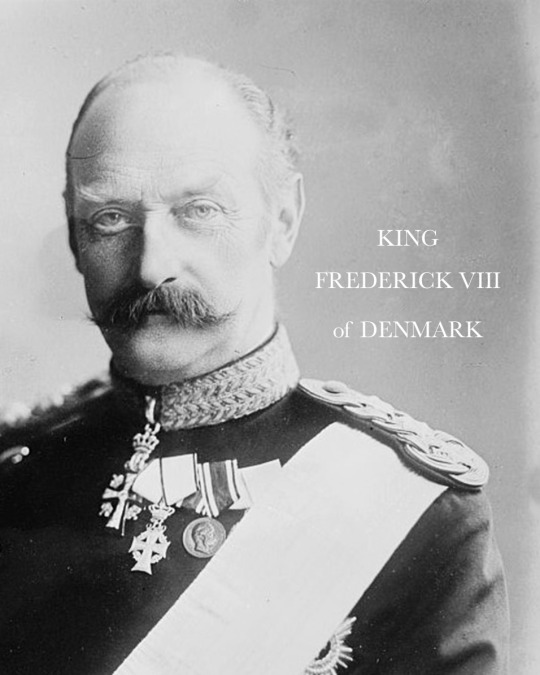
GODPARENTS OF NICHOLAS II
Born during his grandfather's reign on 18 May (New Style) 1868 at the Alexander Palace, Tsarkoe Selo in Saint Petersburg. He was the eldest son of Alexander III and his wife Maria Feodorovna (then, the Tsarevich and Tsarina of Russia). He was christened on 1 June at the Chapel of the Resurrection of the Catherine Palace at Tsarskoe Selo, by the confessor of the imperial family, protopresbyter Vasily Borisovich Bazhanov. His godparents were:
ALEXANDER II, EMPEROR OF RUSSIA - his paternal grandfather, the Russian Emperor stood as one of the godparents. He became the Emperor of All Russia in 1855. Alexander’s most significant reform as emperor was the emancipation of Russia’s serfs in 1861, for which he is known as Alexander the Liberator. He was assassinated in 1881 when the young Nicholas was only 12 years-old, to which he became the heir apparent upon his death.
PRINCESS MARIE OF HESSE AND BY RHINE, EMPRESS MARIA ALEXANDROVNA OF RUSSIA - his paternal grandmother, the consort of Emperor Alexander II, was another of his godparents. Known for her intellect, she was one of the founders of the Russian Red Cross Society. However, she suffered from tuberculosis from 1863 and spent long stays in southern Europe to avoid harsh winters. Although she and her husband were unofficially separated sometime after the death of their eldest son, Maria was treated with respect and love by her surviving family. Maria passed away from illness when the young Nicholas was still a child.
PRINCESS LOUISE OF HESSE-KASSEL, QUEEN CONSORT OF DENMARK - his maternal grandmother was listed as one of his godparents. Louise became the Queen consort of Denmark upon her husband's - King Christian IX - accession in 1863, just few years before her grandson Nicholas' birth. She, herself, was a niece of another King of Denmark (Christian VIII). The great dynastic success of Louise's six children was to a great extent a result of Louise's own ambitions - through them, she was a grandmother of not only the future Tsar of Russia (Nicholas II), but also that of King George V of the United Kingdom; King Constantine I of Greece; King Christian X of Denmark, and King Harken VII of Norway.
GRAND DUCHESS ELENA PAVLOVNA OF RUSSIA - his great-great-aunt, the wife of the late Grand Duke Michael Pavlovich, was one of his godparents. Born as Princess Charlotte of Württemberg, she became a close friend of his grandmother the Empress Maria Alexandrovna, and was known as an intellectual. She was also considered the most exceptional woman in the imperial family since Catherine the Great.
KING FREDERICK VIII OF DENMARK - then, the Crown Prince, his maternal uncle stood as one of his godparents. During the long reign of his father, he was largely excluded from influence and political power. Upon his father's death in 1906, he acceded to the throne at the advanced age of 62. In many ways, Frederick VIII was a liberal monarch who was much more favorable to the new parliamentary system introduced in 1901 than his father had been, being reform-minded and democratically inclined.
Source
84 notes
·
View notes
Text
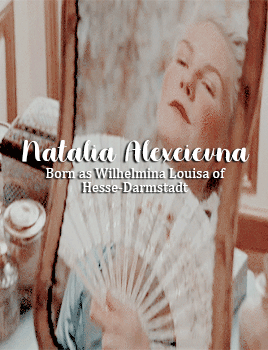

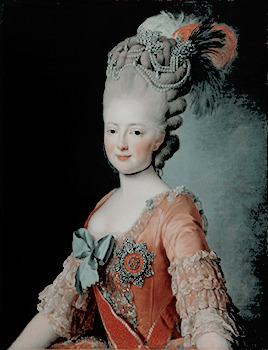








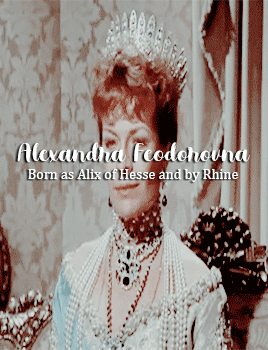
"Catherine II played a decisive role in the choice of future tsarinas, introducing compatriot women in the court. And so, with one exception (Alexander III's wife, who would be Danish), they would all be of German origin. The princesses were selected very young, between fourteen and sixteen years old, still shy and malleable. The ceromonies obeyed a very strict etiquette, starting with the solemn entrance of the future Grand Duchess, until her wedding. The court carriages were waiting for the young lady at the station. On the way to the Winter Palace, where the great dignitaries would be presented to her, she could admire the living barrier of the imperial Guard outlined to her passage. On horseback, the emperor escorted the golden carriage with the imperial crown on top, pulled by eight gray horses. The Grand Dukes followed on horseback, and the Grand Duchesses, in other luxurious carriages. The next stage was a kind of guided tour by the imperial palaces of St. Petersburg and the surrounding area, which was an opportunity for the young foreigner to learn the history of the country. Another important stage of this training consisted of inculcating the culture of the country of adoption, to allow a complete integration. (something Catherine II had achieved to perfection). The future Grand Duchesses were to learn Russian and convert to Orthodoxy. It didn't take long for them to lose all contact with their home country. Thus, stripped of their Germanness, they could become authentic Slavs. The wedding ceremonial remained unchanged until the reign of Nicholas II. After the festivities ended, the young wife found herself closed in the rigid world of the Russian monarchy. They had to give up their personal tastes and erase their personality. Becoming another guardian of secular traditions, she was to become an idol of the nation."
The Tsarinas - The Women who Made Russia | Vladimir Fedorovski.
(Loose translation)
#Tsarina alexandra#tsarina maria alexandrovna#empress alexandra#Natalia alexeievna#Tsarina maria feodorovna#facts#my own#my editis#nicholas and alexandra 1971#lyubov imperatora 2002#charlotte of prussia#Empress elizaveta alexeievna#elizabeth alexeievna#my edits#movie gif#romanovs#history#russian history#the romanovs#house of romanovs#tsarina
167 notes
·
View notes
Text
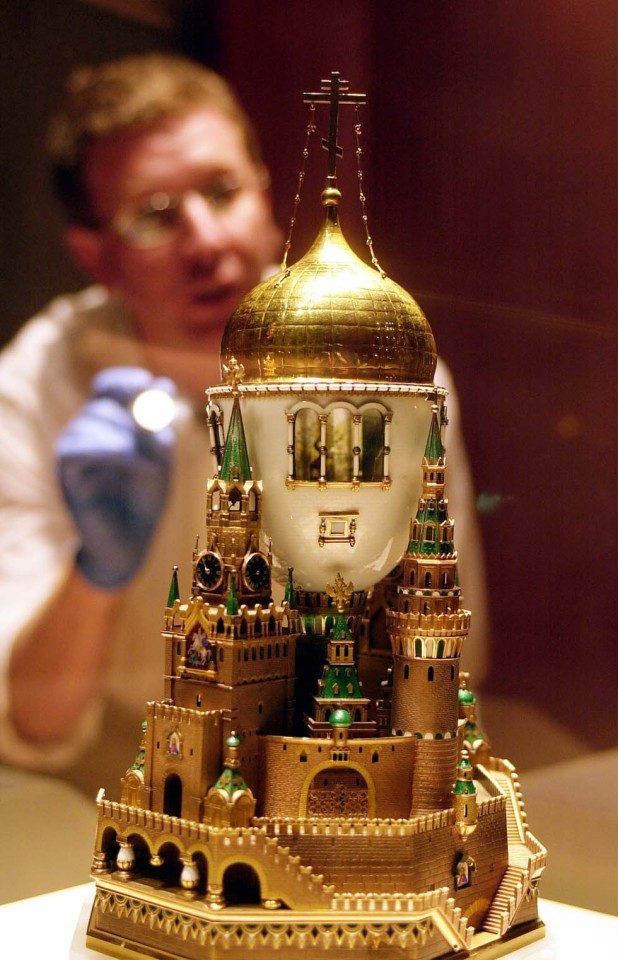
Description: This, the most ambitious and tallest of the known Imperial Easter eggs, represents the Uspenski (Dormition) Cathedral where the tsars of Russia were crowned. Based on a cup attributed to the Nüremberg copper and silversmith Sebastian Lindenast, the elder (ca. 1460-1526), the walls, towers, and staircases are clustered around the central, opalescent white enamel egg, the top of which takes the form of a graceful yellow gold cupola. The turrets of the Kremlin are fashioned in red gold and the roofs are enameled translucent light green. There are musical chimes in two of the towers, the decorative clock dials measuring about half an inch (12 mm.) in diameter. The Spasskaia Tower, which is duplicated, bears the coat of arms of the Russian Empire and of Moscow. Through the glass windows of the egg can be seen a minutely accurate representation of the interior of the cathedral, with its rich carpets, decorations, and High Altar, shown on an oval glass plate.
Two Cherubim chants, traditional triumphal Easter hymns, are played when a mechanism is wound up by a gold key two and a half inches (63 mm.) long. Tiny enameled icons of Our Lady of Kazan and Christ Pantocrator decorate the walls of the cathedral. The egg, which rests on an octagonal white onyx base, is consciously designed as a pyramid and is built up of other smaller pyramids. Engraved at the foot of the model in white enamel on a round gold plate is the date, 1904 (Snowman, 1979; Fabergé, Proler, & Skurlov, 1997). Fabergé’s bill for the egg says:
Egg, “Moscow Kremlin,” of different colored gold, with a white enamel egg representing the Uspenski Cathedral, with music, on a white onyx pediment. (Fabergé, Proler, & Skurlov, Fabergé Imperial Easter Eggs, London, 1997)
The bill is signed by A. (Editor’s note: Alexander) Fabergé for C. Fabergé and dated St. Petersburg, June 7 (OS), 1906. The egg can be removed from the towers, which hold it in place.
Background Notes: This somewhat startling egg marked the Imperial couple’s return to Moscow in 1903. They had tended to avoid the capital following a disastrous incident during the celebrations to mark their coronation. Hundreds of Muscovites died, crushed to death, when a crowd ran amok in Khodynka Meadow. Many Russians took the tragedy as a bad omen for the reign of the new tsar. Indeed, Nicholas II’s first cousin, Marie Pavlovna, Grand Duchess of Russia, recalled:
In the court circles, the disaster was little mentioned … but seemed under a cloud of sadness and premonition. All, perhaps without saying, regarded this catastrophe as a bad omen at the very beginning of the new reign. (Fabergé, Proler, & Skurlov, Fabergé Imperial Easter Eggs, London, 1997)
Tatiana Muntian in von Solodkoff, Fabergé: Juwelier des Zarenhofes (Hamburg, 1995) redates this egg to 1906, even though the egg itself has 1904 on its base. Writing in the World of Fabergé (Moscow, 1996) catalog, Muntian says the egg was to have been presented in 1904, but there was a delay, probably because of the Russo-Japanese War. This issue is discussed further in the introduction to the chapter entitled “Encyclopedia of Who’s Who in the House of Fabergé.” (Lowes and McCanless, Fabergé Eggs: A Retrospective Encyclopedia, 2001)
Muntian also observes in Fabergé, Proler, & Skurlov, Fabergé Imperial Easter Eggs (London, 1997), that another disaster was connected with this egg. Nicholas II’s favorite uncle and brother-in-law, Grand Duke Sergei Alexandrovich, was assassinated in the Kremlin by a socialist-revolutionary terrorist early in 1905. This was the first and only time a member of the ruling dynasty was murdered in the ancient citadel of the Moscow tsars. This may have delayed presentation of the egg for a second year. Nicholas II did not receive the Moscow Kremlin Egg to give to Alexandra Feodorovna until 1906, and the bill of sale was not presented until that year.
Despite these sad associations, the Moscow Kremlin Egg held the most prominent position in Alexandra Feodorovna’s display cabinet in the Mauve Sitting Room of the Alexander Palace. This is not surprising; the tsarina was deeply religious and became more so with age. Tsar Nicholas II had remarked in 1903 how much he enjoyed the Cherubim chants of Kastelskii during Easter services in the Uspenski Cathedral. Muntian says in Fabergé, Proler, & Skurlov, Fabergé Imperial Easter Eggs (London, 1997) this is most likely why the music was included in this egg.
An archival Fabergé photograph of this egg would indicate that some of the chain work that decorated the cross at the egg’s apex, is now missing. The cost of 11,800 rubles made it the most expensive Tsar Imperial Easter egg to date. The egg is readily identifiable in the 1922 inventory of confiscated Imperial treasure. An expert valuation was made of this egg in 1927. Found by Fabergé, Proler, & Skurlov, the valuation noted that, “The article is badly damaged, many domes broken, two chains missing from the cross. Cupola dented, one window broken, another missing. One eagle and two flags missing. Various small parts dented. Key broken.”
Despite all this damage, the valuation assessed the egg’s worth at 46,400 rubles-the highest of the sixteen eggs valued in the list.
Amidst the troubles of 1905, Nicholas II and Alexandra Feodorovna moved from the Winter Palace in St. Petersburg to the Alexandra Palace at Tsarskoye Selo, 25 kilometers south-west of the capital, feeling they and their family would be safer there. From this point on, all Alexandra’s Easter eggs would be housed at the Alexander Palace, with the exception of the 1907 Rose Trellis Egg. Alexandra left all her other earlier Easter eggs behind at the Winter Palace.
15 notes
·
View notes
Text


Queen Dany Targaryen of Seven Kingdoms
Of course since the books haven't been completed yet Just how Dany get's to the sticky note that D&D based season 8 on remains a mystery. But let's have some fun and imagine for a moment that she does become Queen of the Seven Kingdoms. If you haven't picked up on it yet I decided really early on to base Targaryen fashion very loosely of that of Imperial Russia (Anastasia is always on my mind and if you look at the first Dany all the way back in... November? September? There's some Anastasia sleeves & crown going on)
So after she leaves her conquest of Slaver's Bay/The Great Grass Sea she starts to use Targaryen fashion to reassert her claim for the Iron Throne. She has been wearing Kokoshnik-inspired crowns/tiara's from the beginning, and hopefully the pattern of trailing sleeves and high decorative collars creates a nice through line as she redefines her identity as the Targaryen Heir.
I am the artist!!! Don’t repost without permission & credit! Thank you! Come visit me over on: Instagram , Patreon
#daenerys targaryen#daenerys stormborn#daenerys targeryan#queen daenerys#the north#winter is coming#historically inspired#redesigning heroines#character design#costume design#digital illustration#ellenart#lnart#redesigning game of thrones#game of thrones#a song of ice and fire#valyrianscrolls
774 notes
·
View notes
Text
I accidentally deleted the following ask I was sent by @queenmorganlafay:
Hi. In a previous post, you mentioned that Rhaella might have crowned Viserys by touching her crown to his forehead. Is this something that’s done in real life, to bestow power on child kings and consorts?
(Referencing this ask)
There have certainly been changes to coronation rituals when child kings have been involved. Henry III was infamously crowned as a child not with a great crown of state (though the original St. Edward's Crown appears to have been one of the few crown jewels King John did not lose in the Wash) but with a corolla belonging to his mother, the dowager Queen Isabella; Edward VI too, although crowned with both St. Edward's Crown and the imperial crown, wore a crown specifically made to be light and small enough to fit the nine-year-old king's head. Likewise, when Mary, Queen of Scots was crowned at nine months old, Cardinal David Beaton simply held the crown over the head of the infant queen, rather than attempting to make the baby wear it. Too, there have been coronation rituals in history where a monarch uses their own crown to symbolically confer power upon another monarch: Nicholas II of Russia, for example, crowned his wife Alexandra by first placing his own magnificent imperial crown on her head for a moment before removing it and giving her the consort's crown instead. There can also be modifications, sometimes amusing, to a coronation ritual when circumstances demand it: when Charles of Valois, son of King Philip III of France, was acclaimed as King of Aragon during the Aragonese Crusade, for example, Cardinal Jean Cholet used his own galero (the wide-brimmed red hat of a cardinal) to crown young Charles, earning him the nickname roi du chapeau.
In any event, the reason there is so much room to speculate here is because Targaryen coronations have been anything but consistent when it comes to their form or rituals, especially those responsible for the actual act of crowning. Queen Visenya placed the crown on Aegon the Conqueror's head at his first coronation (as she would later for her son Maegor), in the Aegonfort, while the ruling High Septon did so at his second, Oldtown coronation. Aenys I was presented with a crown by the High Septon when he became king, but it is unclear whether this represented a true act of coronation (as Aenys was also said to have "donned his father's iron-and-ruby crown" after the funeral of Aegon I, whereupon "Grand Maester Gawen proclaimed him" king). The ruling High Septon did the honors for the young King Jaehaerys I, but Gyldayn remains silent on any accession ceremonies for his grandson and heir, Viserys I (we'll leave aside the Stepstones coronation of Prince Daemon by his future father-in-law, Corlys Velaryon). During the Dance, each rival faction had its own coronation, with Criston Cole placing the Conqueror's crown on Aegon II's head and Prince Daemon crowning Rhaenyra with the crown of King Jaehaerys. (Though it is worth noting that Queen Alicent was reported to have placed her own crown on the head of the new queen, her daughter Helaena.) Aegon III appears to have been crowned by the High Septon, and the young king himself crowned his (first) queen, Jaehaera - though after Fire and Blood Volume 1, details on Targaryen coronations grow even more scarce (we know, for example, the High Septon crowned Daeron II, and we know there were coronations for Jaehaerys II and Aerys II, but little else).
So in the last days of the Targaryen monarchy, as Queen Rhaella and her exiled household on Dragonstone watched an aristocratic revolution sweep away the old dynasty, the widowed queen may have decided to invent her own ritual of coronation for her sole remaining son, not only because there was little if any established precedent but also because she herself had limited resources at her disposal. If she herself had worn a crown as she sailed to Dragonstone (as Viserys and Daenerys certainly had such a piece for a time in Essos), she would not have had Aegon IV's ostentatious crown (worn by her husband), nor almost certainly the crowns of Aenys or Maekar (whose fates after the lives of their known bearers remain unknown). Nor could the High Septon sail to Dragonstone in the last hours of the civil war to acclaim young Viserys king, even if he had wanted to do so. In turn, maybe Rhaella figured that she was the only one on Dragonstone with the symbolic, regal standing necessary to confer the mystical aura of kingship to young Viserys. If a born Targaryen like Queen Rhaenys could crown a king, and if a Targaryen queen by marriage could crown her daughter as queen, then she, Rhaella, could crown her son as king, she might have thought - and if she lacked the proper coronal equipment traditional for a Targaryen king, she would simply use the crown she had on hand, already invested with her own queenly authority. Aerys II, perhaps, had crowned her queen (s Aegon III did for Jaehaera), or at the very least she had become queen at the moment he became king; by a sort of transitive property, then, Rhaella perhaps placing her crown on Viserys' brow may have linked the son to his father as his heir and successor. We don't know that any of this actually happened, of course, but if it did this is what I think might have been Rhaella's thinking on the matter
36 notes
·
View notes
Text
The Imperial Coronation Regalia
Since we just went through a coronation, I am posting about the Russian crown jewels and regalia. There is a difference between the two: The Crown Jewels are the most famous of a nation's treasures and may include extraordinary items such as orbs, scepters, crowns, and gemstones…all closely connected with the status and role of the monarch. Regalia is usually a smaller collection consisting of a specific set of emblems, symbols, or paraphernalia indicative of royal status, rights, prerogatives, and privileges a sovereign enjoys.
What is considered the Coronation Regalia of the Russian Empire changed several times throughout Russian History. From 1723 -1724 it has consisted of:
The Crown of Empress Catherine (the Imperial Crown), the Orb of Peter II, the Imperial Scepter, and the "Small Imperial Crown" made for Maria Alexandrovna. A picture of the rather unique ruby capping the Imperial Crown is included; the ruby is 398.72-carats...


The crown of Empress Anna Ivanova...

The Agraf (buckle of Imperial mantle): You can see the diamond "buckle" (which stretches over her decolletage, holding the edges of Catherine's ermine cape) and also in the black and white picture below, on the lower tier, between two necklaces
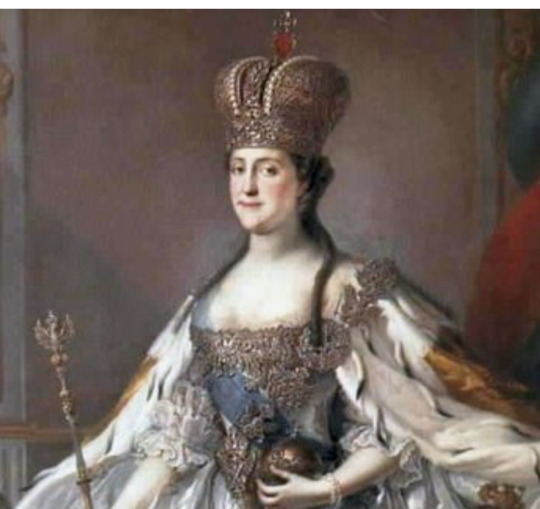
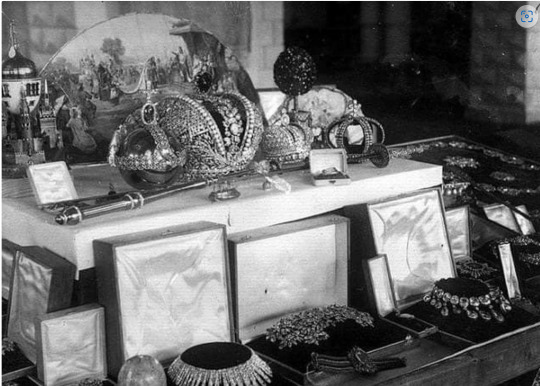
The Maltese Crown of Emperor Pavel I...
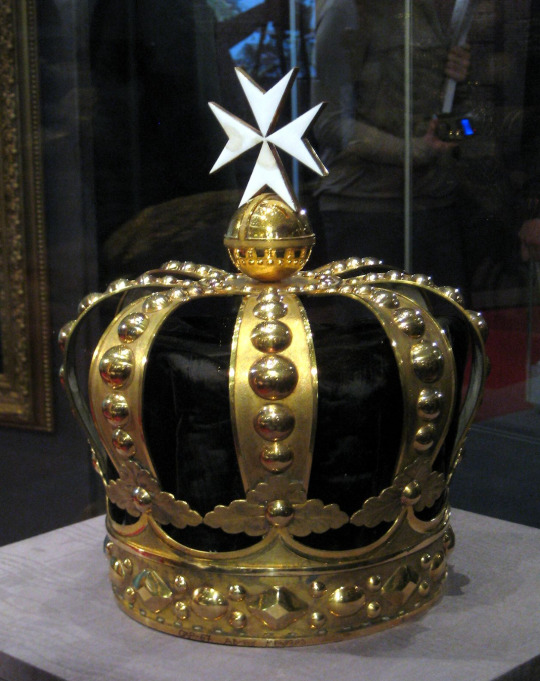
The State Sword and State Shield...

A little bit about the recent history of the Russian Crown Jewels and Regalia:
When the Great War erupted, the Russian Crown Jewels were packed into eight sealed trunks and sent from Petrograd (St. Petersburg) to the Armoury Chamber in Moscow, where the trunks remained sealed for several years because no one knew what was inside of them.
When the trunks were opened in 1922, the treasures found inside were found to span the reigns of the Russian Emperor Peter I (The Great) in 1698 to Nicholas II in 1917; the imperial regalia were saved and remained in the Kremlin Armoury to this day, along with other major historic jewels associated with the tsars.
The communist government was strapped for cash, and the historical significance of the Russian Crown Jewels was anathema to their tenets. The jewels were exhibited for one month and then cataloged. In 1925 the catalog was published and offered to prospective buyers. But, although a few pieces were sold, the collection was soon taken off the market (somebody in the Bolshevik government must have realized they were giving away their History.) The majority remains in Russia at the Kremlin Diamond Fund in Moscow. And the rest? Nobody knows what was sold, and pieces surface on auction occasionally.
What is considered the regalia is pictured above...but the Russian Crown Jewels and other artifacts are simply amazing...I have included a few below for your viewing pleasure!
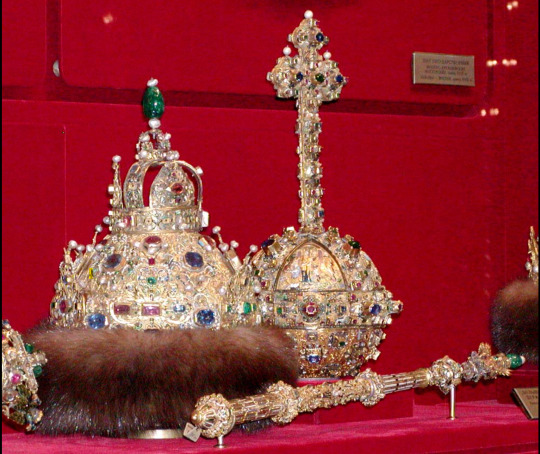
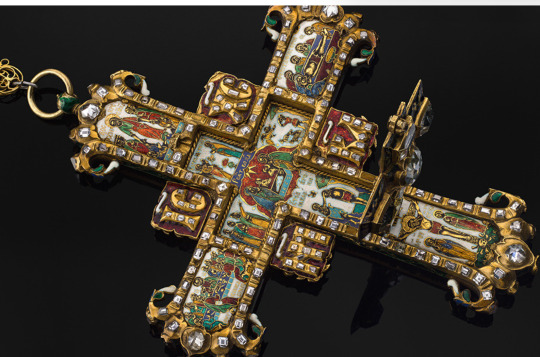


#russian history#romanov dynasty#imperial russia#romanovs#imperial regalia#Crown of Catherine the Great#Maltese Crown of Pavel I#Crown of Empress Anna Ivanovna#Agraf#State Sword and State Shield
23 notes
·
View notes
Note
Heya!
I was wondering what is your opinion on the Lucifer's "new" design for hazbin hotel. I really want to know because up to this point I have not seen a design get so much hate. At least on twitter that is. What makes the hate towards it a little weird to me is that you can see his design in a painting in the pilot and there wasn't any hate towards it. At least none that I know of.
(Also the fact that some of the people that dislike the "new" design call him Satan instead Lucifer. Even though they are supposed to be two different people in this universe lol. At that what I heard.)
Yeah, I try to avoid Twitter slap-fights as much as possible since I value my sanity and my limited time on this earth. I have been apprised of the Lucifer situation, though.
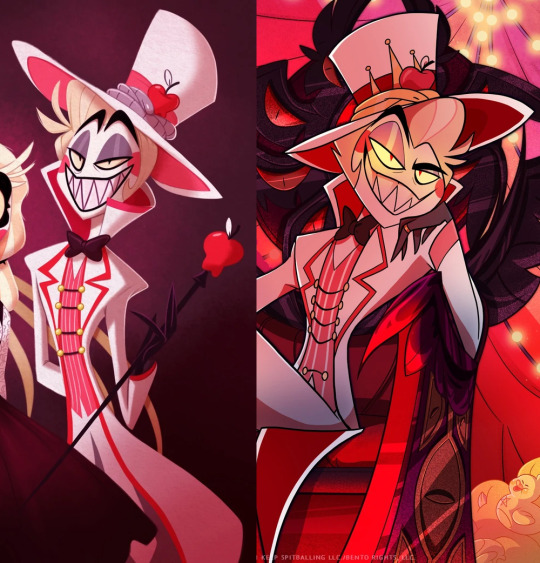
I'm wondering if the folks who are so incensed even saw the portrait in the pilot. Or maybe they did, but didn't know Lucifer was the one depicted in it. So this would basically be their first time seeing this design, and it's a huge letdown for them. Or maybe they're just sick and tired of seeing the same old design tropes reused over and over in the same show and this was their breaking point. Maybe a combination of the above.
Gotta say, though, I'd be surprised if anyone aware of the original were genuinely stunned that the team barely changed anything. This has been the pattern for, what, the past 2-3 reveals now? Are y'all really shocked?

But putting the hate train aside, blocking out the noise: How does the design hold up on its own merits?
I will say the snake on the new version’s hat looks more like a snake than a worm, which is a point in its favor. The crown is... an okay addition? I guess? It’s clear they’re trying to get the whole “king” thing across, but the crown/top hat combo feels too reminiscent of Stolas, and the very similar crown design doesn’t help matters. Here’s where some more visual research would come in handy: There’s more than one style of crown in the world, guys.
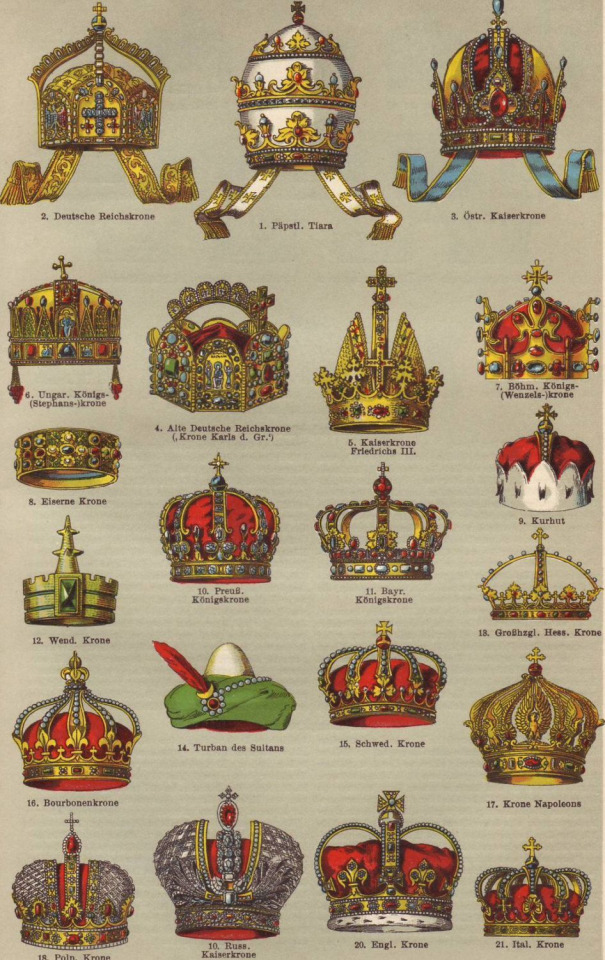

A few historic crowns I found interesting were the UK’s Imperial State Crown, the Imperial Crown of Russia, and Napoleon’s coronation crown, which, funny enough, he called the Crown of Charlemagne (like Charlie Magne, the original name of Lucifer’s daughter in this universe). If we combine elements of these crowns and move away from the top hat, we can lean harder into that king shit.

I still agree with the person who asserted that pentagrams and inverted crosses are “basic” demonic symbols, but if they’re still running rampant in the Hazbin environment, might as well be consistent. (And at least the more unexpected symbols of the apple and snake balance them out.) It’s a first draft and my main concern with this version is the line mileage, but at least now the dude looks a bit more kingly.
(Also, yes, Lucifer and Satan would be two different demons in this universe. Helluva Boss making Asmodeus the ruler of the Lust ring suggests that this world operates on Binsfeld’s classification of demons, which links Lucifer to the sin of pride and Satan to the sin of wrath.)
#ask#maddiebrj#hazbin hotel#hazbin hotel critical#lucifer#redesign#critique#criticism#character design
141 notes
·
View notes
Text
Why Vesna’s “My sister’s crown” in no feminist anthem but a Trojan horse filled with pro-russian messaging
My thoughts as a Ukrainian with a poli-sci degree.
I was debating whether to write this post but as the discourse around this song grows, I want to give people from other countries some context on the messaging used in the song and why Ukrainians are grossed out by it.
While I was writing it this post grew a mind of its own and I even ended up adding pictures so I'll fold the post here in case you don't care and just want to scroll through quickly.
First of all, it’s worth mentioning that this song attracted so much attention from Ukrainians because they use UKRAINIAN LANGUAGE in the chorus. It’s an important detail seeing how one of the singers is russian. A lot of Ukrainians share the opinion that letting a russian woman sing in our language is a completely vile thing to do to our culture. I agree with it too. But the abuse of our culture doesn’t stop there.
See this shot? This is supposed to be Borsch, a traditional Ukrainian dish. It’s worth mentioning that russia tried to appropriate this dish and in 2022 we fought tooth and nail to have UNESCO protect it as part of Ukrainian heritage. But back to the shot. The letters around it are supposed to symbolize russian propaganda. Great start🙄

But it gets better, lads. They start “feeding the propaganda” to the girl that —judging by stylistic choices as well as matryoshka makeup— is supposed to represent russian people.
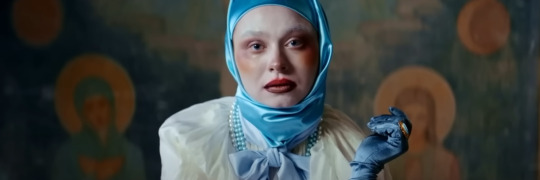

Right, so they *checks notes* use Ukrainian cultural dish —that russians almost succeeded in stealing from us— to show… what exactly? “Poor russians🥺 uwu” getting brainwashed? Oh, then let me grab my handkerchief. This is so so sad I think I’m about to cry😶😶😶
I mean, just a thought but if they wanted to show how shitty russian government treats its people, they could’ve recreated the historically accurate moment when russian tzar Ivan the Terrible shoved his underling’s face into a boiling soup. What does Ukraine and our long-suffering dish has to do with all this bs???
Now let’s talk about that “Crown”, that is supposed to belong to the sister (aka Ukraine). To me, as a poli-sci major, this is so stupid I don’t even know whether to laugh or cry. From the words of the band themself, where they explain —quite poorly might I say— the meaning of their song, we learn that “Crown” symbolizes the sovereignty of the 13 Eastern-European countries. Sounds perfectly valid. Here's a few random countries that I can remember from the top of my head in no particular order that have crowns in their symbols:
Coat of arms of the Czech Republic, Coat of arms of Serbia, Flag of Poland and Flag of Croatia

I actually decided that I don't want to have russian flag and emblem in this post because I don't want to look at it every time I scroll through, but you can go google it if you want, they have not one but two crowns on their emblem actually.
So what am I leading up to with all this flag-talk, you might ask. Well, the kicker is that THIS ⬇️ is Ukrainian emblem:

Not a crown in sight as you can see. I guess as a nation that was constantly fighting against imperial colonisation we’re not very fond of those. Who could’ve guessed🤷♀️
But the aforementioned two points are pretty circumstantial and in the grand scheme of things are not particularly significant. I felt compelled to point them out first to give people from other countries a bit of insight into the music video's visual. You are free to disagree with me on those. The main problem that triggers the majority of Ukrainians is the use of the word "sister". Listen, I know you don’t want to read a lecture on the nuance of Slav politics and I don’t really want to write it, I know you know how to google. So here’s the gist:
One of the BIGGEST narratives that russia is pushing in its export propaganda (aside from their go-to claim that all ukrainians are nazis) is that Slavs are all a family. Talk about shitty relatives, eh? But basically, it’s a lingering thing from USSR where russia exploited a bunch of neighboring countries and called this shit a “Union” (while convincing the rest of the world that those countries entered that union willingly and not under threats —or as a result of— hostile invasions, but I digress). So the way russia frames it is that russia is this big brother that "takes care of other little siblings”. Even writing it down made me want to barf🤢🤢🤢. This narrative was specifically very actively weaponized against Ukraine before the 2022 invasion. Its goal is to infantilize Ukraine as if we're not a whole-ass independent country, but a little sibling that doesn't know how to wipe their own ass. And that we just need good ol’ russia to come and save us from our own stupidity. I hope I shed some light on why this word specifically triggers us so much and why I think that this song has 0 to do with solidarity and overall is complete populistic bs with a generous dash of russian propaganda.
I want to emphasize that I didn’t make this post to fight or argue with anyone but to give people another perspective if you’re interested in it from my pov as a Ukrainian. If you have other takes on it, I’d love to read them in the comments. Just please be respectful or I won’t interact.
This is all I have to say for today. Love, love, peace, peace, my dudes.
78 notes
·
View notes
